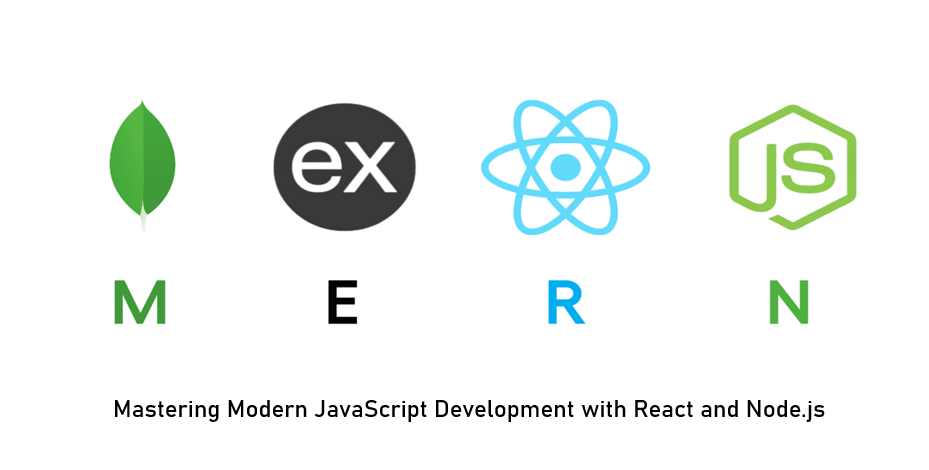Mastering Modern JavaScript Development with React and Node.js
Dive into the world of JavaScript development with a focus on React for frontend and Node.js for backend. Learn the best practices, tools, and libraries to streamline your development workflow and build powerful web applications.
Introduction
In the world of modern web development, JavaScript has emerged as the cornerstone for building dynamic, responsive web applications. With frameworks like React and Node.js, developers can create scalable and high-performance applications with a seamless integration between the frontend and backend. This guide explores the latest trends, best practices, and key tools to excel in both frontend and backend JavaScript development.
Why JavaScript is the Key to Full-Stack Development
JavaScript has grown beyond its traditional role in the browser to become a powerful tool for both frontend and backend development. The rise of React on the frontend and Node.js on the backend has created a unified development experience where JavaScript is used across the entire stack. This consistency simplifies development, enhances performance, and reduces the learning curve for developers.
Benefits of Using React for Frontend
1. Component-Based Architecture: React allows you to build reusable components, leading to cleaner code and easier maintenance.
2. Virtual DOM for Performance: React’s Virtual DOM efficiently updates only the changed parts of the UI, making applications faster and more responsive.
3. Ecosystem & Community: With an extensive ecosystem of libraries and a large community, React provides the tools and resources needed for building complex applications.
Why Choose Node.js for Backend
1. JavaScript Everywhere: Node.js allows you to use JavaScript on the server-side, streamlining the development process.
2. Non-blocking I/O: With its event-driven architecture, Node.js excels at handling multiple concurrent requests without slowing down, making it ideal for real-time applications.
3. Large Package Ecosystem: The Node.js ecosystem, with npm (Node Package Manager), provides a massive collection of libraries and tools to enhance backend functionality.
Key Tools and Libraries for React and Node.js
To build modern web applications, using the right tools and libraries can significantly speed up development. Here are some of the most popular and effective tools for both React and Node.js:
Essential React Libraries
1. React Router: Manage navigation within your React applications by defining routes and rendering components based on the URL.
2. Redux: For managing state across your application, Redux provides a predictable state container, especially useful for large-scale React apps.
3. Styled Components: A powerful tool for styling your React components using tagged template literals, making CSS easier to manage in large applications.
Popular Node.js Frameworks
1. Express: As the de facto web framework for Node.js, Express simplifies routing, middleware integration, and server-side rendering, allowing developers to quickly build APIs.
2. NestJS: For building scalable server-side applications, NestJS leverages TypeScript and offers an Angular-like framework to build robust, modular backends.
3. Socket.io: Real-time communication is made easy with Socket.io, allowing you to build chat applications, live updates, and multiplayer games.
Building a Full-Stack Application: React + Node.js
Here’s a basic flow to create a full-stack application using React on the frontend and Node.js with Express on the backend:
1. Set Up the Backend with Node.js and Express: Start by setting up a Node.js server with Express to handle API requests and serve your frontend application.
2. Connect to a Database: Use a database like MongoDB or PostgreSQL to store and manage data. Utilize ORMs like Mongoose (for MongoDB) or Sequelize (for SQL databases) to streamline database operations.
3. Build the Frontend with React: Use React components to create a dynamic UI. Fetch data from your backend using Axios or Fetch API and display it to users.
4. Integrate Authentication: Use tools like JWT (JSON Web Tokens) or Passport.js to authenticate users and secure API routes.
Best Practices for Optimizing Your JavaScript Applications
1. Code Splitting: In React, use React.lazy() and Suspense to load only the necessary components on demand, improving performance.
2. Environment Variables: For sensitive data, store API keys and configuration settings in environment variables instead of hardcoding them in your application.
3. Asynchronous Programming: Use async/await and Promises to manage asynchronous operations efficiently, ensuring non-blocking operations in both React and Node.js.
4. Testing: Implement unit and integration tests using tools like Jest, Mocha, and Chai to ensure the stability and functionality of your application.
"Conclusion"
Mastering JavaScript development with React and Node.js opens the door to building powerful and scalable web applications. By understanding both frontend and backend JavaScript, you can create full-stack applications that deliver seamless user experiences. As the JavaScript ecosystem continues to grow, staying up-to-date with the latest trends and best practices will ensure that your projects remain relevant and efficient in an ever-evolving digital landscape.




